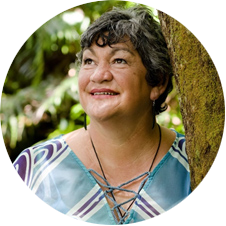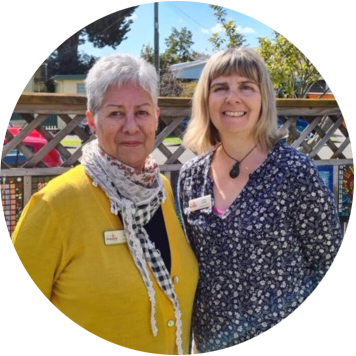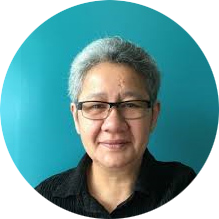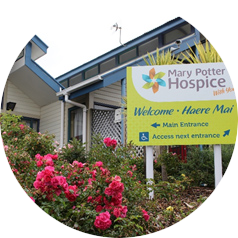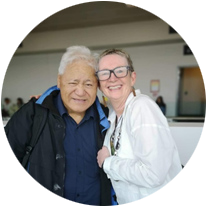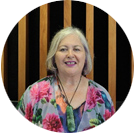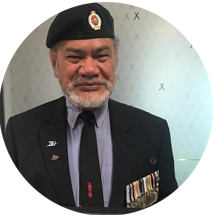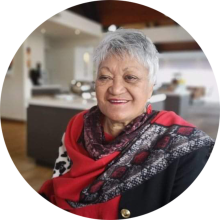-
For Whānau Manaaki Family Caregivers
- Kete Aronui Maori Palliative Care A site for whānau manaaki, family caregivers
- Te Ipu Aronui Road Map
- Kete Tuauri
- Spirituality and wairua
- Karakia definition
- Diverse spiritual faiths and practices
- Spiritual safety and protection
- Spiritual care within hospitals, hospices and aged residential care services
- The power of karakia
- Spiritual support at time of death
- What if you do not know your spiritual care customs?
- Kete Aronui - rongoā
- Rongoā healing
- Forms of rongoā
- Use of rongoā rākau (natural plant medicines) is increasing
- Are you thinking about using rongoā?
- Include your rongoā healer in your health care team
- Self-care
- Te Ipu Aronui’s Kete Tuauri
- Staying with the tūpāpaku
- Karakia before and after death
- Preparing the tūpāpaku (body)
- Caring for the tūpāpaku (body) after death
- Planning and preparation for care following death
- Whakanoa (spiritual clearing of environment process)
-
For Health Professionals
- Whanaungatanga - Establishing a relationship
- Connections take time
- First contact - building a rapport
- Rich histories and lifestyles
- Building trusting relationships
- Whānau systems of care Care roles within whānau
- Geographical location and end of life care
- Challenges whānau face
- Cultural safety - more effective than cultural competency
- Cultural safety - a definition
- Māori health and palliative care workforce
- Strengthening Māori cultural safety
- Caring for Māori health professionals
- Tikanga
- Ngākau pono Working with a sincere heart
- Caring with aroha
- Self-care
- Te Reo Māori The Māori language
- New Zealand history
- Kaumātua tino rangatiratanga Independence, authority
- Places kaumātua are cared for
- Dying in a healthcare setting
- Living in a ‘home’
-
Pae Herenga Research Background
- Healthcare providers
- Palliative care resources
- Support services
- Grief and loss support
- Research
- Tangihanga and funerals
- Links and Information for Health Professionals
- Te Reo Māori Resources
- Cultural Safety
- New Zealand History
- Pūrākau
- Advanced Care Planning (ACP)
- Medicines Directory
- Publications
- Māori Data Sovereignty
- Covid 19 Study
Introduction
The name Rapua te Mārama means gathering the light or becoming enlightened about the impact social restrictions had on the end-of-life care of whānau during the COVID-19 pandemic and how families adapted their tikanga to navigate tangihanga and bereavement. Our Te Ārai Kāhui Kaumātua and leader, Rawiri Wharemate, named the study before he died in 2021.
The inspiration to undertake this study was informed by the death of the principal investigator’s 1-day old mokopuna, Te Minaora Raukawa, during Alert Level 4. Mr Rawiri Wharemate and the Te Ārai Kāhui Kaumātua supported the need for this COVID-19 study.
The COVID-19 pandemic imposed restrictions upon the movement of New Zealanders unlike any the country has previously experienced. Significant numbers of New Zealanders experienced a whānau death during lockdown at Alert Levels 3 and 4. Health services were disrupted and many people died without having whānau present due to visitor bans in hospitals, hospices and Aged Residential Care facilities.
The Te Ārai Kāhui Kaumātua and research team was led by Dr Tess Moeke-Maxwell. The team gained a Health Research Council COVID-19 grant to explore gaps in palliative care service provision during the COVID-19 pandemic. We wanted to identify what supported whānau to care for someone at the end of their life and what helped with bereavement and conducting tangihanga during COVID-19 Lockdown. We also interviewed funeral directors and Māori health professionals to hear their views. We employed photographers to photograph whānau storytellers to inform the virtual online exhibition and also the exhibition book.
Findings
The Rapua te Mārama study will share new knowledge about whānau end of life experiences during the COVID-19 pandemic. Over the next year we will upload the study findings as we analyse the data. We will share information to showcase how whānau adapted their tikanga to navigate one of the most difficult situations New Zealanders have encountered.
Research participants
The team interviewed 25 whānau, 17 funeral directors, 21 health professionals and two community leaders about dying, tangihanga and bereavement during COVID-19 Lockdown. Over 100 people were interviewed in total. Whānau storytellers are not confidential participants in the study. Funeral directors and Māori health professionals are confidential participants. We had 8 research sites: Mid-North, Aotea, Great Barrier Island, Auckland, Tauranga, Hawkes Bay, Wellington, Motueka, and Southland/Central Otago.
Photographic exhibition
The photographic exhibition ‘Rapua te Mārama – Whānau reflections on life and death during COVID-19 Lockdown’ is featured on the Te Ipu Aronui website. The exhibition shares intimate whānau stories about end of life and loss during COVID-19 Lockdown. We will publish an exhibition book to share with whānau participants, hospices and libraries in 2022. An exhibition book (PDF version) will be available to download at the end of the study (Feb, 2023).
The team
The Rapua te Mārama study was led by Dr Tess Moeke-Maxwell with co-investigators, Professor Merryn Gott, Mrs Kat Mason, Dr Lisa Williams, Mrs Whio Wharemate Hansen, Dr Tatiana Tavares, Professor Linda Waimarie Nikora, Dr Melissa Carey, Dr Jackie Robinson, and Professor Janine Wiles. Research assistance was provided by Nette Scurr. Ali Taheri designed the virtual exhibition with support from Dr Tatiana Tavares and with support from his team.
The Rapua te Mārama team operated under the cultural guidance of the Te Ārai Kāhui Kaumātua; Andy Peters, Whio Wharemate Hansen, Joe Naden, Donna Kerridge, Kiripai Kaka, Tina Parata, Aaron Ngawaka, Lexy Ngawaka, Ash Puriri, Te Kauri Wihongi and Walter Thompson.
This study has been made possible by the guidance and leadership of the Te Ārai Kāhui Kaumātua. We acknowledge the valuable role Rawiri Wharemate occupied before he passed away in 2021. Although physically absent from us his presence is gratefully felt. We are grateful his sister Whio Wharemate Hansen has continued to work closely with our team in developing the cultural aspects of our project. We are indebted to her.
We are grateful to the New Zealand Health Research Council for awarding us the funding to lead the Rapua te Mārama study (2021-2023). Without their support this study would not be possible.
Our stakeholders
The project has received encouragement and support from Hospice NZ, Hospice Mid-North, Waipuna Hospice, Cranford Hospice and Mary Potter Hospice, the National Hauora Coalition, Te Ohu Rata o Aotearoa (Māori Medical Practitioners Association), Te Rōpū Taki Māori Committee to Hospice New Zealand, the Māori Health Outcomes Health Quality & Safety Commission, the Funeral Directors Association of New Zealand, and Māori hauora and community groups. We are grateful for your continued support of our research work.
Creative Arts Team
Our creative arts team includes Dr Lisa Williams, Dr Tatiana Tavares, and Mr Ali Taheri. Lisa over saw the creative project development. Tatiana provided the graphics for this book with cultural guidance from Whio Wharemate Hansen, Tess Moeke-Maxwell, Kat Mason and the Kāhui Kaumātua as well as Professor Merryn Gott, Associate Professor Janine Wiles, Professor Linda Nikora, Dr Melissa Carey, and Dr Jackie Robinson. Tatiana designed a new font to compliment the cultural theme of the exhibition book. Ali designed and produced the virtual photographic exhibition.
We would like to acknowledge Mr Ali Taheri for producing the Rapua te Mārama interactive virtual exhibition site. Ali worked closely with Tatiana, Lisa, Tess, Whio and Kat to create the landscape concept. Ali developed the site, including the production of 20 individual indigenous plants native to Aotearoa. The online exhibition can be viewed on this website by clicking here.
Matariki theme
The vision for the exhibition drew on the theme of Matariki (Māori Luna New Year). The Te Ārai Kāhui Kaumātua provided the guidance and approval for this vision in consultation with Mr Rikki Solomon. We are grateful to Professor Rangi Matamua for his inspirational book, Matariki.
Photographers
We engaged photographers to work with whānau in each location. We are very grateful to Eddison Te Reo, Erica Sinclair, Adele Krantz, Melissa Banks, Putaanga Waitoa, Porena Douglas, Chevron Hassett and novice photographer Angela Angel for their photographic knowledge, talent, and skill.
Whānau stories
The exhibition stories belong to the whānau storytellers and reflect their experiences. Tess Moeke-Maxwell and Kat Mason are grateful the whānau entrusted them to co-produce the stories for the exhibition. Kat wrote the stories for the Matthews, McLeod, and Hamilton whānau. Tess wrote the stories for the Hedger, Jones, Wilson, McIntyre, Onekawa, Thompson, Kahi, Cleave, Hollis, Raukawa, McDonald, Kaeo, Sheeran, Kershaw, Te Moana, Shaw, Rogers, Huirama, Adams, and Ryan whānau.
Community Collaborators
We are very grateful to our community collaborators; Belinda Watkins, Arena and Hana Munro and (Mid-North) and Mid-North Hospice; Tina Parata; Richard Thurlow and Waipuna Hospice; Katie Durbin; Janice Byford and Cranford Hospice, Linda Olsen, and Te Omanga hospice; Tony Paine, Vanessa Eldridge, and Mary Potter Hospice; Gaynor Rikihana-Tākao; Rodney Ngawaka and Kawa Marae Committee, Aotea Great Barrier Island.
